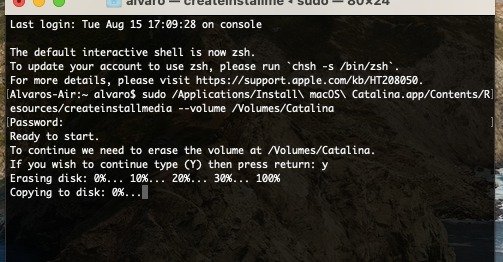@chinchillas --- I just signed up on this forum for the first time, specifically to reach out and ask if there was ever a resolution to this. I just spent literally 7-8 DAYS researching, watching, calling, reading, backing up (multiple times), and attempting to learn everything I could about macOS changes, because operating system changes still freak me out and I'm still annoyed that we're effectively forced into them as software becomes reliant on a few operating systems. I purchased a MacBook in early 2021 that shipped with Catalina and lived comfortably on it until, finally, I had to get at least Big Sur in order to update camera software and update Davinci Resolve. In the process....
I'm glad I read through everyone's horror stories because I was about to have the same one most likely if I had not taken such a ridiculous amount of time.
I thought that surely I could "clean install" Big Sur from a bootable installer, coming from Catalina, but from these three pages, I got the impression that's no longer possible??? I called AppleCare and they told me that I couldn't do a clean install of Big Sur until I was on Big Sur. So what's the point at all of the bootable installer??? Is this all because of the T2 chips?
As soon as I did a "dirty install" of Big Sur today (and proceeded to spend 3 hours fixing Adobe Photoshop to get it to stop from crashing; yes it was compatible, but things happened and that was a whole separate debacle), I didn't like the iOS feeling UI and in conjunction with the frustrations I was having otherwise, wished I could go back.
I learned a lot over the past week but suppose that software alone, I'm stuck now. My question is: can we really no longer downgrade our operating systems at all? Is this security certificate expiration date issue above now making it impossible to roll back? At this point I almost want to clean install something (even Big Sur) just to stick it to Apple after a week of my life and productivity went down the rabbit hole of something as simple as an operating system switch.
I watched a whole bunch of this guy's videos....https://www.youtube.com/watch?v=DM1j4TVt7BY
It's not so much that I think I'm GOING to downgrade, but if I really can't, that bothers me quite a lot and I signed up on this forum just to ask if this ever got resolved at all.


